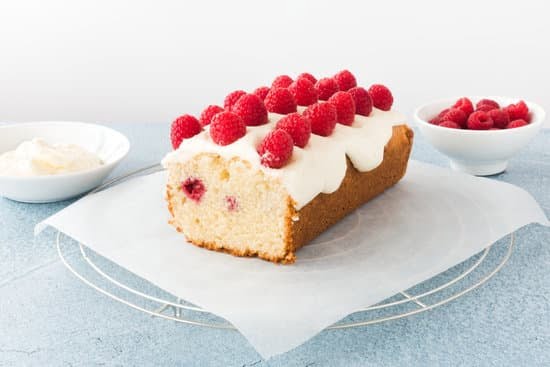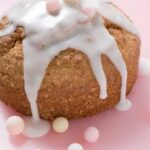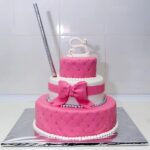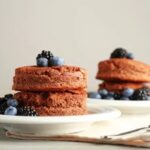Hydrangea cake decorating is a stunning and intricate art form that has captivated bakers and cake enthusiasts alike. With its delicate petals and vibrant colors, hydrangea cakes are not only visually appealing, but also make for a show-stopping centerpiece at any occasion.
In this article, we will explore the beauty of hydrangea cake decorating, from its origins to essential tools and techniques. Whether you’re a beginner looking to learn the basics or an experienced decorator searching for inspiration, this guide will provide you with everything you need to know about creating your own stunning hydrangea cakes.
Hydrangea cake designs have gained immense popularity in recent years, thanks to their unique charm and versatility. These designs often feature clusters of edible hydrangea flowers delicately arranged on cakes, creating a three-dimensional effect that is both elegant and eye-catching. The appeal of these designs lies in their ability to mimic the beauty of real hydrangeas, allowing decorators to create breathtaking floral masterpieces using various techniques.
In the world of cake decorating, hydrangeas have become an integral part of this art form. Originating from China and Japan, where they hold cultural significance as symbols of gratitude and emotional sincerity, these blossoms have found their way into culinary creations around the globe. Today, hydrangeas are considered a staple element in cake decoration due to their timeless beauty and ability to effortlessly elevate any design.
In this comprehensive guide on hydrangea cake decorating, we will delve into everything you need to know to create your own stunning floral confections. From exploring the origins and cultural significance of hydrangeas in different countries to providing step-by-step instructions and tips on achieving realistic details – we’ve got you covered.
Additionally, we’ll also discuss color choices, occasion-specific inspirations, troubleshooting common mistakes, and ways to unleash your creativity with this beautiful art form. So get ready to embark on a journey that combines sugar, artistry, and the timeless beauty of hydrangeas.
A Brief History of Hydrangeas in Cake Decorating
Hydrangea cake decorating has a rich history that dates back centuries. The origins of using hydrangeas in cake decoration can be traced to various cultures around the world.
In Japan, for example, hydrangeas are considered a symbol of gratitude and apology, and their delicate petals have long been used as a decorative element in traditional tea ceremonies. Similarly, in Europe, hydrangeas have been admired for their vibrant colors and luxurious appearance, making them a popular choice for adorning cakes during special occasions.
As time went on, the use of hydrangeas in cake decorating became more widespread. In the late 19th century, French pastry chefs began incorporating realistic sugar flowers into their confectionery creations, including beautiful hydrangeas. This trend quickly spread to other countries, with bakers and cake decorators embracing the elegance and versatility of hydrangea designs.
Today, hydrangeas have become an iconic staple in cake decoration. Their abundance of petals allows for intricate detailing and stunning arrangements on cakes of all sizes. Whether it’s a simple buttercream design or an elaborate fondant masterpiece, the inclusion of hydrangea flowers adds a touch of sophistication and natural beauty to any cake.
To bring this history to life in your own hydrangea cake decorating endeavors, it’s important to unerstand the cultural significance behind these flowers. Consider exploring different styles and techniques from various cultures to truly appreciate the diverse ways in which people have incorporated hydrangeas into their confections. By learning about the history behind this art form, you’ll not only enhance its aesthetic appeal but also gain a deeper appreciation for its cultural significance.
Essential Tools and Ingredients for Hydrangea Cake Decorating
Hydrangea cake decorating is a beautiful and intricate art form that requires the right tools and ingredients to achieve stunning results. In this section, we will explore the essential tools and ingredients needed for hydrangea cake decorating.
When it comes to tools, you will need a few key items to create hydrangea cakes. First and foremost, you will need piping bags and tips. Piping bags with small round tips are perfect for creating the individual petals of the hydrangea flower. Additionally, having a variety of petal-shaped tips can add depth and dimension to your design.
Another important tool is a flower nail. A flower nail is a small metal spike with a flat head that allows you to pipe your petals onto it while rotating the nail to create a symmetrical shape. This tool is crucial for creating realistic-looking hydrangea petals.
In terms of ingredients, buttercream or royal icing is typically used for hydrangea cake decorating. Buttercream gives a soft and delicate look to the flowers, while royal icing provides a more defined and intricate appearance. It is important to have enough icing prepared so that you can easily achieve the desired texture and consistency for piping.
Additionally, food coloring gels are essential for achieving vibrant colors in your hydrangea petals. You will want to have a variety of colors on hand, such as blues, purples, pinks, and whites, to create realistic floral hues. Gel-based food coloring works best as it produces vibrant colors without affecting the consistency of the icing.
To achieve realistic details on your hydrangea cakes, it is also helpful to have some non-edible tools at your disposal. For example, using floral foam or Styrofoam can help support your floral arrangement as you construct it on the cake without damaging the cake’s surface.
Having these essential tools and ingredients on hand will set you up for success when it comes to hydrangea cake decorating. With the right tools and a little practice, you will be able to create stunning hydrangea cakes that are sure to impress.
Step-by-Step Guide
Now that you have an understanding of what hydrangea cake decorating is and the necessary tools and ingredients, it’s time to dive into the process of creating hydrangea petals. This step-by-step guide will provide you with the knowledge and techniques needed to achieve beautiful and realistic hydrangea petals for your cake design.
Step 1: Preparing Your Tools and Materials
Before you begin creating the petals, it’s important to ensure you have all the necessary tools and materials at hand. You will need flower cutters in various sizes to create different petal shapes. Additionally, make sure you have a foam pad or flower former to shape your petals on.
For materials, choose a high-quality flower paste or gum paste that is firm yet pliable. This will allow you to mold and manipulate the petals easily. It’s also helpful to have a small rolling pin or fondant smoother for rolling out your paste evenly.
Step 2: Rolling Out Your Paste
To start creating your hydrangea petals, take a small amount of flower paste and roll it into a ball. Place it onto your work surface that has been lightly dusted with cornstarch or powdered sugar to prevent sticking. Use your rolling pin or fondant smoother to roll out the paste into a thin sheet. Aim for a thickness of about 1/8 inch (3mm).
Step 3: Cutting Out Petals
Once you have rolled out your paste, select the appropriate cutter size for the petal shape you want to create. Press the cutter firmly down onto the paste, ensuring clean edges as you lift it up. Repeat this process until you have cut out enough petals for your hydrangea flower.
Step 4: Shaping the Petals
To give your petals a realistic look, use a foam pad or flower former to shape them. Place a petal on the pad and use a ball tool or the rounded end of a paintbrush to gently thin and ruffle the edges. Apply light pressure and work in circular motions, gradually moving from the center of the petal towards the outer edges. This will create a curved and natural-looking shape.
Continue shaping each petal until you are satisfied with their appearance. Remember that hydrangea petals have some variation in size and shape, so don’t be afraid to experiment with different techniques and levels of ruffling.
By following these step-by-step instructions, you’ll be well on your way to creating exquisite hydrangea petals for your cake design. Remember to take your time and practice as much as possible to refine your skills. In the next section, we will explore how to construct the center of the hydrangea flower and arrange the petals to achieve a realistic look.
Building the Hydrangea Flower
Creating a realistic hydrangea flower on a cake involves carefully constructing the center of the flower and arranging the petals in a way that mimics the natural growth pattern of hydrangeas. In this section, we will guide you through the process of building the hydrangea flower on your cake, from creating the center to arranging the petals for an authentic look.
To create the center of the hydrangea flower, you will need a small ball of fondant or gum paste. Using your hands or tools, shape it into a dome-like structure. This will serve as the base for attaching the petals later on. You can also use edible pearls or sugar balls to add texture and depth to the center.
Once you have prepared the center, it’s time to arrange the petals around it. Start by taking your prepared petals and positioning them closely together around the center. For a more realistic look, stagger their placement, with some slightly higher or lower than others. Use edible glue or water to secure each petal in place.
It’s important to pay attention to how real hydrangeas grow in clusters. As you attach each petal, alternate between layers that are closer to the center and those that extend further outwards. By varying their position and angle slightly, you can create depth and dimension in your hydrangea arrangement.
For additional realism, consider adding smaller filler flowers or buds among your hydrangea petals. These could be tiny blossoms made from gum paste or fondant in complementary colors. Arrange them sporadically throughout your hydrangea cluster to mimic their placement in nature.
Overall, building a realistic hydrangea flower on your cake requires attention to detail and careful arrangement of petals. Take your time during this process to ensure that every petal is securely attached and positioned for maximum impact.
Resources:
- Fondant or gum paste.
- Small tools for shaping and manipulating the center.
- Edible pearls or sugar balls for additional texture.
- Edible glue or water for attaching petals.
- Filler flowers or buds made from gum paste or fondant.
Tips:
- Stagger the placement of petals for a more organic look.
- Vary the position and angle of each petal to create depth and dimension.
- Consider adding smaller filler flowers or buds among your hydrangea petals.
With these techniques, you can create a stunning hydrangea flower that will impress any cake enthusiast. In the next section, we will explore different color choices and combinations for hydrangea cakes, allowing you to further personalize your design and make it truly unique.
Color Choices and Combinations for Hydrangea Cakes
Color choices play a crucial role in hydrangea cake decorating as they can greatly impact the overall look and feel of the design. When it comes to creating a stunning hydrangea cake, there are various color options and combinations to consider. This section will explore different color choices for hydrangea cake designs, discuss how to achieve a gradient effect or multiple shades on petals, and suggest complementary colors for a visually striking cake decoration.
One of the most enchanting aspects of hydrangeas is their ability to display a wide range of colors. From vibrant blues and purples to delicate pinks and whites, hydrangeas offer endless inspiration for cake decorators. When choosing colors for your hydrangea cake, consider the theme or occasion you are creating the cake for.
Soft pastel shades such as light pink or lavender can evoke a romantic and whimsical feel, making them perfect for weddings or baby showers. On the other hand, bold and vibrant colors like deep blue or magenta can create a striking visual impact, ideal for birthdays or other celebratory events.
Achieving a gradient effect on hydrangea petals can add depth and dimension to your cake design. To create this effect, start by coloring one portion of your icing mixture with the darkest shade you intend to use. Gradually add white icing or another lighter shade to small portions of the mixture until you achieve lighter hues.
Apply the different shades onto individual petals using a brush or piping bag, starting from the center and gradually moving outward. This technique will give your hydrangea petals a natural ombre look that mimics real flowers.
Complementary colors can help enhance the beauty of your hydrangea cakes by providing contrast or harmony within the design. For example, pairing purple-hued hydrangea petals with yellow accents can create an eye-catching contrast that makes both colors pop. Alternatively, using analogous colors such as various shades of blue or purple together can create a harmonious and serene look. Experiment with different color combinations to find the one that best suits your desired aesthetic and theme.
| Color Choices | Combinations |
|---|---|
| Pastel shades (light pink, lavender) | Purple hydrangeas with yellow accents |
| Bold and vibrant colors (deep blue, magenta) | Variations of blue or purple hues |
Hydrangea Cake Decorating for Special Occasions
Hydrangea cakes are not only visually stunning but also versatile enough to be used for a variety of special occasions. Whether it’s a wedding, birthday, or any other event, hydrangea cake designs can add a touch of elegance and beauty to the celebration.
In this section, we will explore inspirations and ideas for using hydrangea cake designs for special occasions, provide tips for adapting the design to different themes and styles, and discuss options for incorporating other elements into the cake.
Inspirations and Ideas
When it comes to special occasions, hydrangea cakes can be customized to suit any theme or style. For weddings, consider creating a tiered hydrangea cake with cascading flowers in soft pastel hues. This timeless design complements a romantic and elegant wedding atmosphere. For birthdays, incorporate vibrant colors into the hydrangeas that align with the celebrant’s personality or favorite color scheme. You can also opt for mini hydrangea cupcakes as an alternative for individual servings at birthday parties.
Adapting the Design
To adapt the hydrangea cake design to different themes and styles, you can modify the color palette or vary the size and shape of the flowers. For example, if you’re planning a beach-themed party, use shades of blue and white for your hydrangeas to mimic ocean waves. If you’re going for a more modern look, consider creating geometric patterns with miniature hydrangeas on your cake.
Incorporating Other Elements
To elevate your hydrangea cake design even further, consider incorporating other elements such as foliage or other flowers. Adding green leaves around the base of each flower gives a realistic touch to your creation. You can also mix in smaller blooms like roses or peonies with your hydrangeas to create a more intricate floral arrangement on top of your cake.
By customizing the design, adapting it to different themes, and incorporating additional elements, hydrangea cakes can be the highlight of any special occasion. Whether you’re celebrating a wedding, birthday, or any other event, a hydrangea cake is sure to impress your guests and create lasting memories.
Troubleshooting and Common Mistakes in Hydrangea Cake Decorating
While hydrangea cake decorating can be a beautiful and intricate art form, it’s not without its challenges. In this section, we will address some potential issues that may arise during the process and provide solutions to common mistakes. By understanding these troubleshooting techniques, you can avoid disappointment and create stunning hydrangea cake designs.
One common mistake in hydrangea cake decorating is using the wrong consistency for the icing or frosting. This can lead to difficulties when piping the petals or achieving realistic details. To avoid this, it’s important to ensure that your icing is the right consistency for your desired design.
If the icing is too stiff or thick, it will be difficult to pipe smooth petals. On the other hand, if the icing is too thin, it may not hold its shape well and could result in wilted-looking petals.
Another challenge that decorators may encounter is achieving consistent petal shapes and sizes. It’s important to practice piping techniques before attempting a full hydrangea flower to ensure uniformity in your design. One helpful tip is to use a template or outline on your cake as a guide for placing each petal. Additionally, varying pressure while piping can help create depth and dimension within the flower.
When working with colors in hydrangea cake decorating, achieving a natural look with multiple shades can be tricky. A common mistake is using too many different colors or creating an unbalanced color palette. It’s important to choose complementary hues that blend harmoniously together. Gradually adding shades of one color using different intensities can create a more realistic effect.
Conclusion
In conclusion, hydrangea cake decorating offers a beautiful and creative way to enhance your cake designs. Throughout this article, we have explored the origins and cultural significance of hydrangeas in cake decoration, learned about the essential tools and ingredients needed for creating stunning hydrangea cakes, and discovered step-by-step techniques for crafting realistic hydrangea petals. We have also discussed color choices, arrangements, and the versatility of hydrangea cake designs for various special occasions.
Now is the time to unleash your creativity with hydrangea cake decorating. With the knowledge and skills you have acquired from this article, you can create breathtaking floral masterpieces that will wow your guests. Don’t be afraid to experiment with different techniques and color combinations to make your designs truly unique.
Remember to always consider the theme or style of the occasion when incorporating hydrangea cake designs. Whether it is a wedding, birthday, or any other special event, adapting hydrangeas to suit different themes can add a touch of elegance and beauty to your creations. Consider adding foliage or other flowers alongside the hydrangeas to create a visually striking and cohesive design.
In summary, by embracing hydrangea cake decorating, you are not only adding beauty to your cakes but also expressing your artistic side. So go ahead, give it a try. Unleash your creativity and let your imagination run wild as you create stunning cakes adorned with delicate and lifelike hydrangeas.
Frequently Asked Questions
Can I put fresh hydrangeas on a cake?
Yes, it is possible to put fresh hydrangeas on a cake, but it is important to take some precautions. Firstly, make sure that the hydrangeas are organically grown and do not contain any harmful pesticides or chemicals. Secondly, ensure that the stems of the flowers are not directly touching the cake surface to avoid any potential contamination.
One way to achieve this is by inserting a piece of food-safe floral wire or a straw into each stem before placing them on the cake. This will prevent direct contact between the flowers and the cake while still allowing them to be displayed beautifully.
What piping tip do you use for hydrangeas?
When it comes to piping tips for creating hydrangea flowers on a cake, one commonly used tip is the Wilton #224. This piping tip has small teeth or individual serrations that help create the texture and shape of hydrangea petals perfectly. To use this tip, you would load your buttercream icing into a piping bag fitted with the #224 tip and hold it at a 45-degree angle above your cake surface.
Begin piping from the center of where you want your flower to be and move outward in slow circular motions, applying gentle pressure as you go. By using this specific piping tip, you can achieve intricate details and realistic-looking floral decorations.
How to make hydrangea cake flowers?
Making hydrangea cake flowers involves a few simple steps but requires some patience and attention to detail. Start by preparing your desired color(s) of buttercream icing and transferring them into separate piping bags fitted with #224 tips for each color if you want multicolored flowers or just use one bag if you prefer monochrome blooms. Hold your piping bag at a 45-degree angle above your chilled cake’s surface, then squeeze gently while moving in slow circular or figure-eight motions to create small petals that resemble clusters of tiny balls.
Continue building layers until you reach your desired size for each flower head, ensuring they overlap slightly for a dense appearance. Vary the pressure and placement of each petal to create depth and variation within the hydrangea. Repeat the process for each flower, alternating colors as desired, and remember to practice to achieve the desired result.

Welcome to our cake decorating blog! My name is Destiny Flores, and I am the proud owner of a cake decorating business named Cake Karma. Our mission is to provide delicious, beautiful cakes for all occasions. We specialize in creating custom cakes that are tailored specifically to each customer’s individual needs and tastes.





